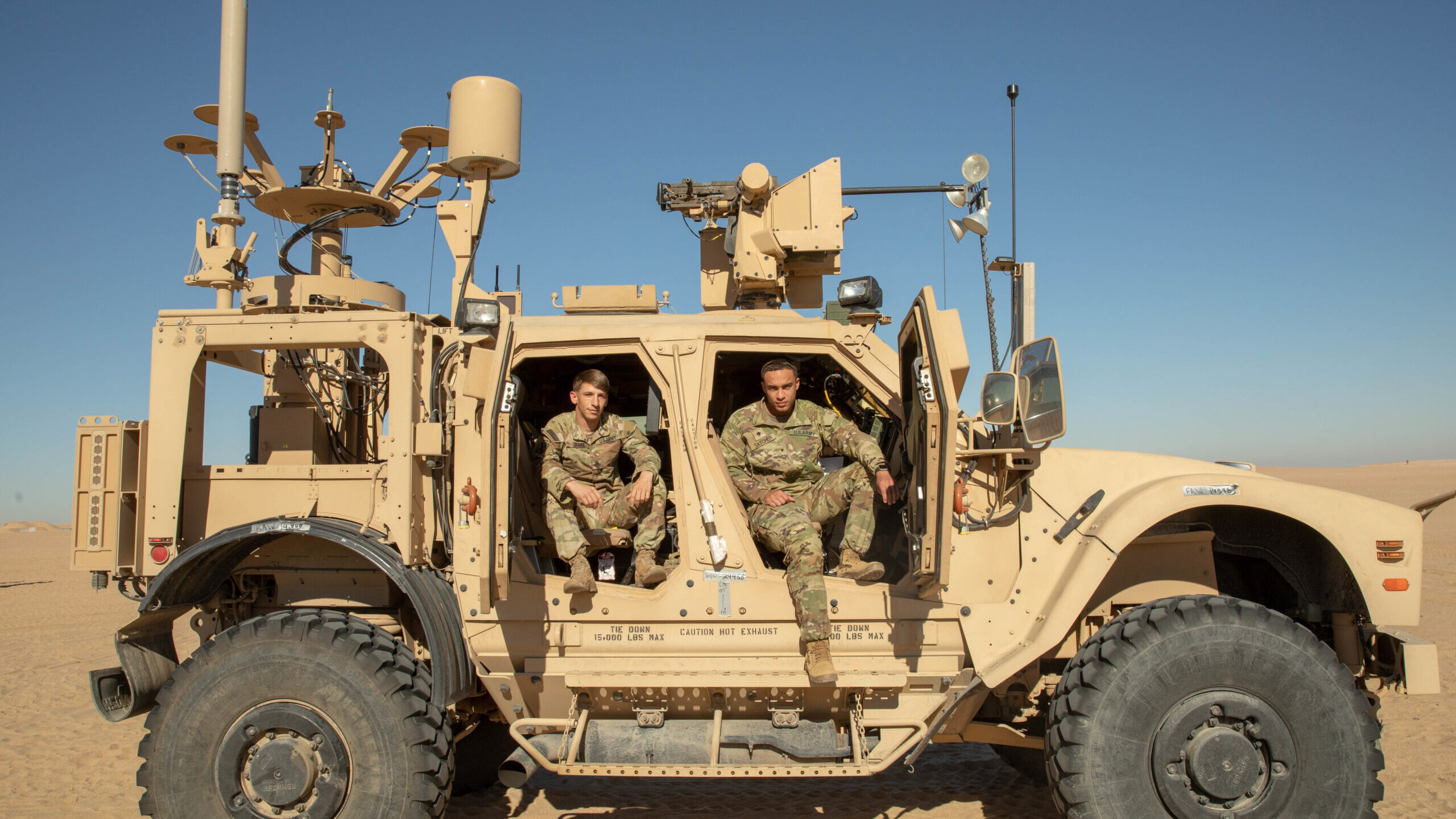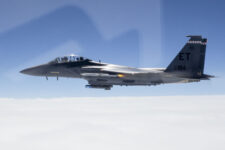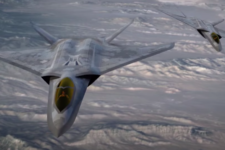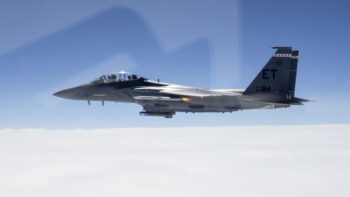
US Army soldiers with 10th Mountain Division sit in a M-ATV outfitted with the M-LIDS outside of Camp Buehring, Kuwait, in January 2022. (US Army/ Spc Damian Mioduszewski)
IDEX 2023 — The US Army is deciding if it will take its Mobile, Low, Slow, Unmanned Aircraft Integrated Defeat System (M-LIDS), currently a two-vehicle system, and merge the capabilities onto a single ride. But until then, foreign military sales of the counter-unmanned aerial system are on hold, according to prime contractor Leonardo DRS.
Countries in the Middle East region have been concerned with aerial drone proliferation for years, and they have sought various technologies to shoot down or otherwise combat the threat, including interest in the Army’s fielded M-LIDS. The United Arab Emirates is on the list of countries that have submitted requests to the US government to purchase the capability nearly two years ago, Michael Coulter, the president of Leonardo DRS International, told Breaking Defense.
“Because it’s an FMS channel we’re a little hamstrung. We can talk about the system and show them the system,” he said last week, days before the start today of the IDEX 2023 defense expo in Abu Dhabi, UAE.
Breaking Defense will be reporting from the show floor. Click HERE to keep up with the latest coverage.
“Frankly, it’s been a little bit slower than we would have liked and we’ve told the Army that, but I think their view is they really want to get to the single vehicle counter-UAS, and then they want to proliferate that worldwide,” Coulter explained. “If you do a foreign military sale of a system, you’re required to then support the system for its lifecycle.”
The US State Department referred questions about M-LIDS FMS sales over to the Army, and the service did not respond to Breaking Defense’s questions about its M-LIDS program or plans for a single-vehicle configuration.
The current M-LIDS Increment 2 configuration uses two mine-resistant ambush-protected (MRAP) all-terrain vehicles (M-ATVs). One vehicle is used to detect and track aerial threats while the second M-ATV, outfitted with kinetic and non-kinetic technologies, downs drones in Groups 1 through 3, or platforms weighing less that 1,320 lbs.
While the Army has been tight-lipped about the program, in June 2022 it issued a sources sought notice looking for options to “transition” the technology package onto a single vehicle as part of an Increment 3 initiative. At that time, the Army said it was interested in receiving a fully integrated prototype for testing in January 2023, and those prototypes could be based around an M-ATV or, possibly, a Stryker ICV Double-V Hull or “similar prime mover.”
Then in October 2022, Leonardo DRS announced it has been working with seven industry partners to design, integrate and test such a M-LIDS package on a single Stryker Double-V Hull Infantry Carrier Vehicle (ICVVA1). Part of this testing included an event at the Big Sandy Test Center in Arizona in September 2022 where the vehicle’s 30mm cannon with XM1211 30×113mm High Explosive Proximity rounds shot down drones.
Coulter said the team has made few vehicle changes since then and a second round of testing is now ongoing. However, he noted that the Army may ultimately decide it wants M-LIDS capabilities on a different vehicle, like the Joint Light Tactical Vehicle (JLTV), or as a package that can be integrated on various platforms.
With multiple questions lingering, Coulter said the Army may be ready to decide on the path ahead and award a contract by the end of the year or in 2024. Such a move could ultimately free up the logjam and provide foreign governments with clarity on M-LIDS sales.





















